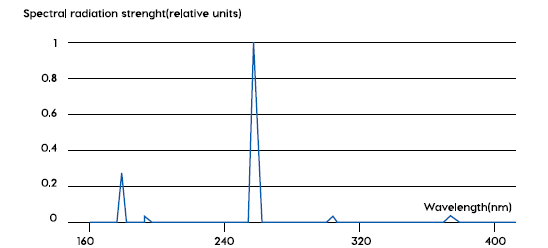
UV light
Ultraviolet is the general term for radiation in the electromagnetic spectrum ranging from 100 to 380 nm. UV light in the 185nm band is mainly used for advanced oxidation. (VUV vacuum ultraviolet section) The 254nm UV bands can be used for oxidation and sterilization.

UV light source for photochemical oxidation
185nm UV can stimulate the oxygen in the air to produce ozone, and at the same time can directly photodecompose volatile organic compounds; 254nm UV can increase the reactivity of ozone.

Whether the malodorous substance can be cracked depends on whether it's chemical bond energy is lower than the energy of the provided UV photons.
The time of cracking reaction is extremely short (<0.01s), and the time of the oxidation reaction needs 2-3s.
Insufficient total UV photon power or insufficient oxygen content will generate some intermediate byproducts due to incomplete cracking or oxidation, thereby affecting purification efficiency. It is more obvious for high-concentration macromolecular organic malodorous substances.
UV photolysis purification is long-term stable and efficient. It requires a reaction temperature of<80 ° C, a dust volume of<100 mg / m3, and a relative humidity of <99%.
If the content of a certain special chemical element in the exhaust gas substance is too high (such as Cl, F, etc.), it will also lead to a significant reduction in the amount of ozone produced by the enhancer, and ultimately affect the overall purification effect.